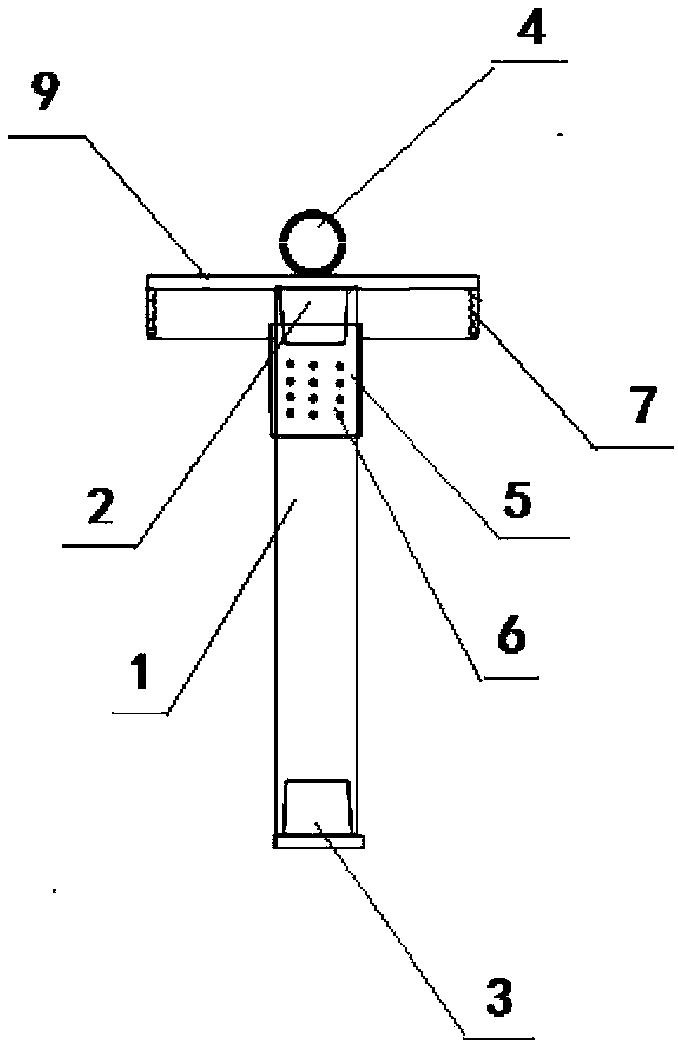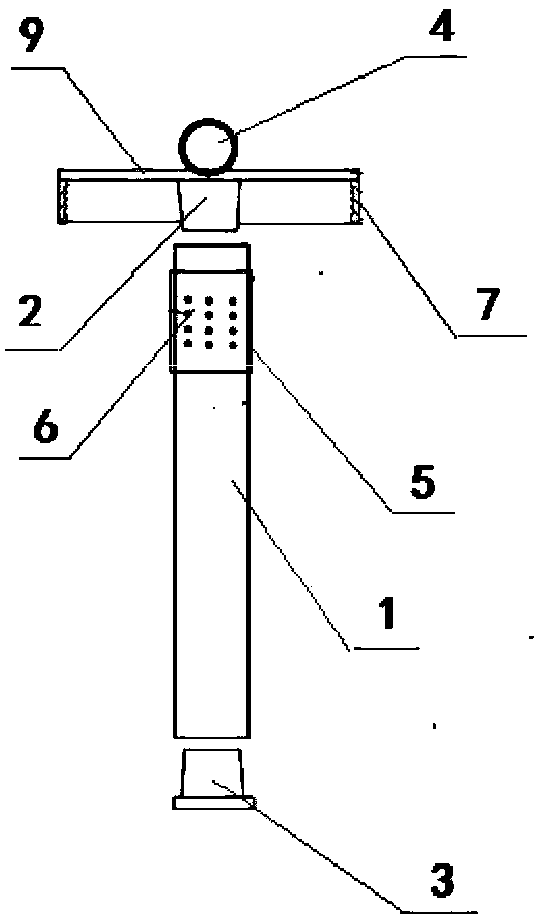Volatile attractant applied to citrus fruit flies and application thereof
A technology of Bactrocera dorsalis and attractants, applied in the direction of attracting pests, application, insecticides, etc., can solve the problems of rotten fruit drop, unsatisfactory effect, affecting fruit quality and yield, etc., to achieve convenient production and use Flexible, easy-to-source effects
- Summary
- Abstract
- Description
- Claims
- Application Information
AI Technical Summary
Problems solved by technology
Method used
Image
Examples
Embodiment 1
[0048] The proportioning of each formula in table 1 is as follows (mass ratio):
[0049] B1 = ethyl propionate, ethyl octanoate and Z,3 hexenyl acetate (mass ratio 1:1:1)
[0050] B2 = ethyl propionate, ethyl octanoate and Z, 3 hexenyl acetate (mass ratio 1:2:1)
[0051] B3 = ethyl propionate, ethyl octanoate and Z, 3 hexenyl acetate (mass ratio 1:1:2)
[0052] B4 = ethyl propionate, ethyl octanoate and Z, 3 hexenyl acetate (mass ratio 1:2:2)
[0053] B5 = ethyl propionate, ethyl octanoate and Z, 3 hexenyl acetate (mass ratio 2:2:1)
[0054] C1 = ethyl acetate: ethyl propionate: ethyl butyrate (mass ratio is 4:1:1)
[0055] Table 1 The number of Bactrocera dorsalis attracted
[0056] deal with
[0057] It can be seen from Table 1 that although all the attractants are effective, the effect of B1-B5 is obviously better than that of C1, especially the attractant effect of B1 is better.
Embodiment 2
[0059] The proportioning of each formula in table 2 is as follows (mass ratio):
[0060] B1 = ethyl propionate, ethyl octanoate and Z,3 hexenyl acetate (mass ratio 1:1:1)
[0061] B6 = ethyl propionate, ethyl octanoate and Z, 3 hexenyl acetate (mass ratio is 8:1:5)
[0062] B7 = ethyl propionate, ethyl octanoate and Z, 3 hexenyl acetate (mass ratio is 3:8:1)
[0063] B8 = ethyl propionate, ethyl octanoate and Z, 3 hexenyl acetate (mass ratio 1:2:8)
[0064] B9 = ethyl propionate, ethyl octanoate and Z, 3 hexenyl acetate (mass ratio 4:6:1)
[0065] C2 = ethyl acetate: ethyl propionate: ethyl butyrate (mass ratio 1:1:1)
[0066] Table 2 The number of Bactrocera dorsalis attracted
[0067] deal with
[0068] It can be seen from Table 2 that the attracting effect of B1 is obviously better than that of other formulas, and B1 is called the basic mixture hereafter, represented by the letter B.
Embodiment 3
[0070] The proportioning of each formula in table 3 is as follows (mass ratio):
[0071] B (base mixture) = ethyl propionate, ethyl octanoate and Z,3 hexenyl acetate (mass ratio 1:1:1)
[0072] D1 = ethyl acetate, propyl acetate, ethyl propionate, ethyl butyrate, isobutyl acetate (mass ratio 1:1:1:1:1)
[0073] D2 = ethyl acetate, propyl acetate, ethyl propionate, ethyl butyrate, isobutyl acetate (mass ratio 1:1:1:2:1)
[0074] D3 = ethyl acetate, propyl acetate, ethyl propionate, ethyl butyrate, isobutyl acetate (mass ratio is 1:1:1:1:2)
[0075] D4 = ethyl acetate, propyl acetate, ethyl propionate, ethyl butyrate, isobutyl acetate (mass ratio is 1:1:1:2:2)
[0076] D5 = ethyl acetate, propyl acetate, ethyl propionate, ethyl butyrate, isobutyl acetate (mass ratio is 4:1:1:1:1)
[0077] Table 3 The number of Bactrocera dorsalis attracted
[0078] deal with
[0079] The basic mixture was more effective at attracting B. dorsalis than mixtures D1-D5.
PUM
 Login to View More
Login to View More Abstract
Description
Claims
Application Information
 Login to View More
Login to View More - R&D
- Intellectual Property
- Life Sciences
- Materials
- Tech Scout
- Unparalleled Data Quality
- Higher Quality Content
- 60% Fewer Hallucinations
Browse by: Latest US Patents, China's latest patents, Technical Efficacy Thesaurus, Application Domain, Technology Topic, Popular Technical Reports.
© 2025 PatSnap. All rights reserved.Legal|Privacy policy|Modern Slavery Act Transparency Statement|Sitemap|About US| Contact US: help@patsnap.com



